At first glance, the Flyer Goroc3 6.50 doesn’t look like an E-trekking bike as its trekking components can’t hide the mountain bike DNA of the full-suspension platform. Does that make it a better trekking bike? The likeable Swiss bike aims to prove just that with a Bosch Performance CX motor and dual-battery option.
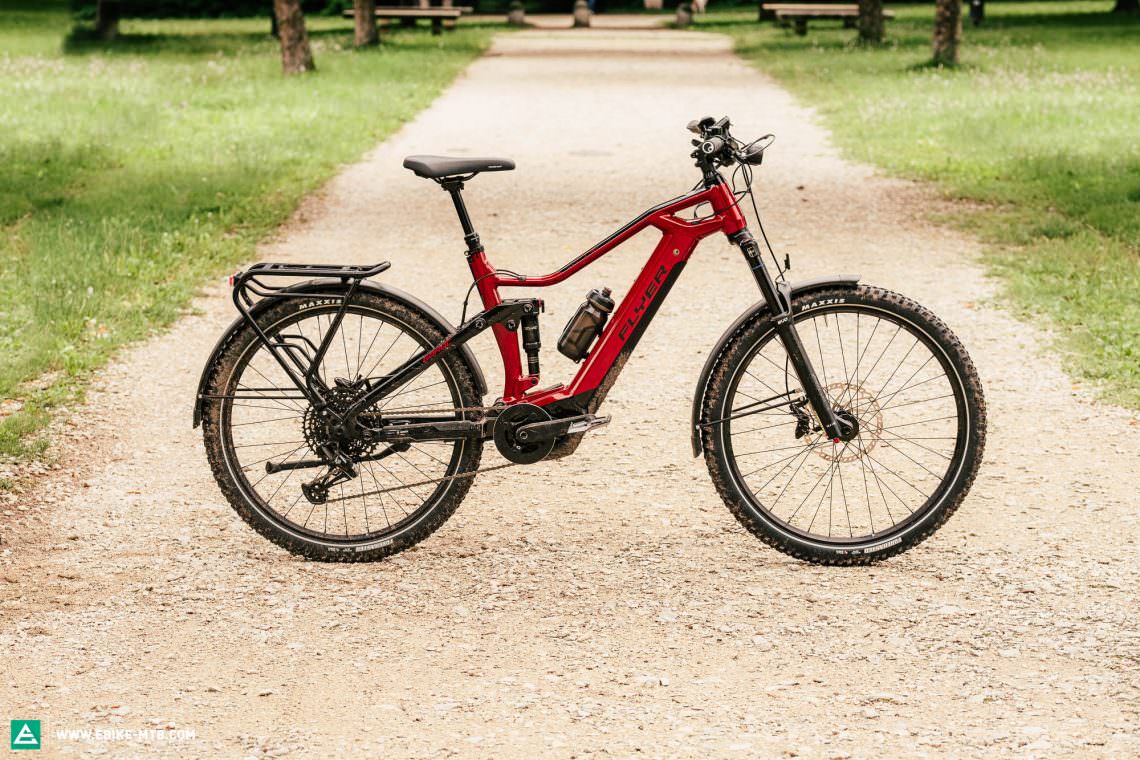
27.04 kg (size L) | € 5,699 | Manufactuer’s website
That eBike is part of our big trekking eBike group test. There you can find an overview of the test fleet and all information on the latest generation of trekking eBikes.
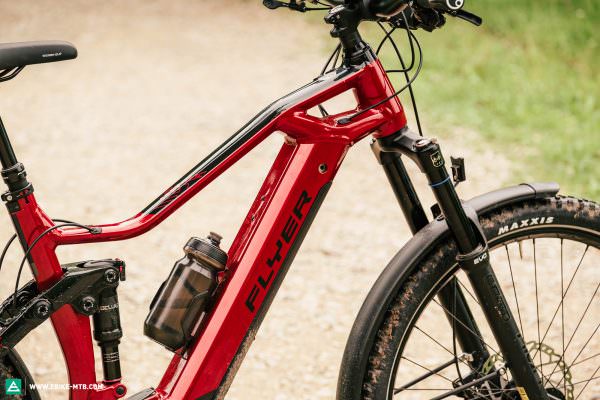

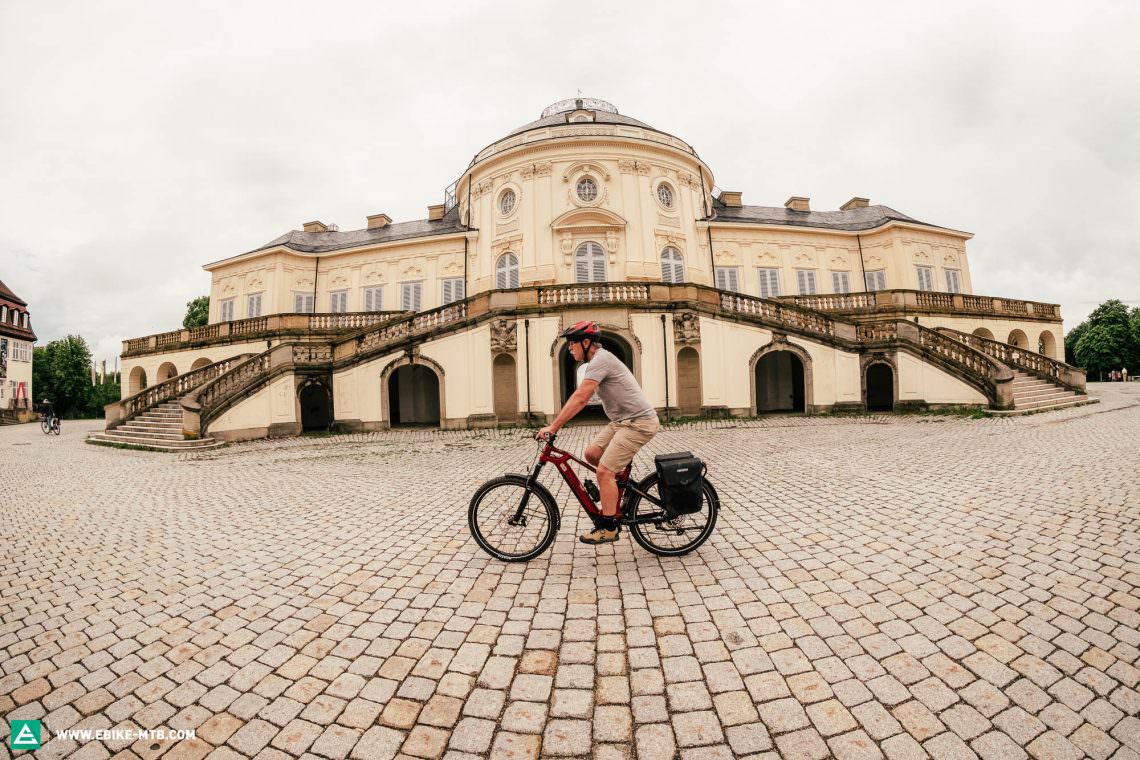
The Flyer Goroc3 6.50 in review – This is how the E-trekking bike with mountain bike genes rides
When it comes to trekking, Swiss brand Flyer have a home advantage. The mountainous landscape of Switzerland is a trekking paradise while also offering some of the most technical trails in the Alps. It’s hardly surprising that Flyer sent us an ebike imbued with such strong mountain bike genes to take on the competition in our search for the best trekking all-rounder. The concept promises advantages in terms of handling, comfort and, above all, safety. We tested the € 5,699 Flyer Goroc3 6.50, with the size L weighing in at 27.04 kg. The riding position on the Flyer is centred above the motor and slightly stretched out. This moves weight from your seat to your hands. That said, the position is upright enough for a good view of your surroundings. On climbs, the weight distribution on the Flyer keeps the front wheel planted and easy to control, no matter how steep the incline. The handling of the Flyer is stable and predictable through long and open corners on flat terrain, which is great for beginners. Thanks to the Shimano MT520 four-piston brakes and ergonomic one-finger levers, the Flyer stops reliably. Eschewing classic trekking tires, the more aggressive MAXXIS Forekaster mountain bike tires offer plenty of straight-line braking traction, even on poorly maintained roads.
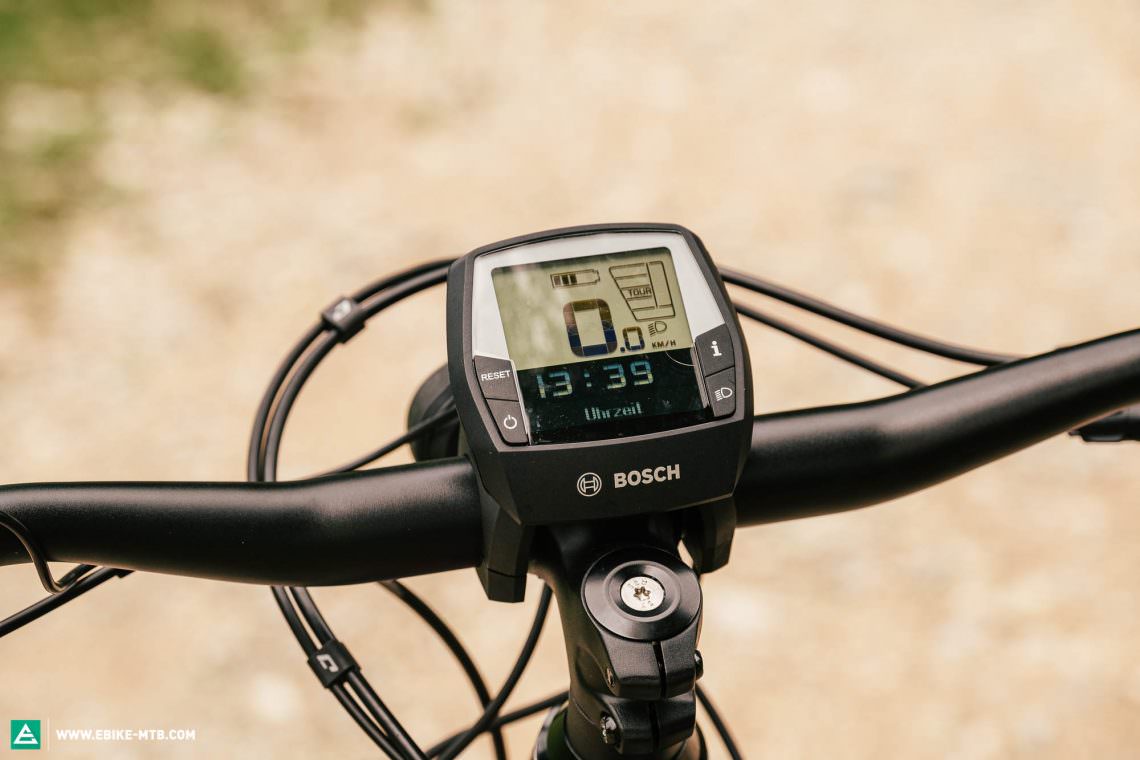
The outdated Intuvia display has about as many functions as a sundial. For better connectivity, the Intuvia bracket is compatible with the € 299 COBI.Bike system.
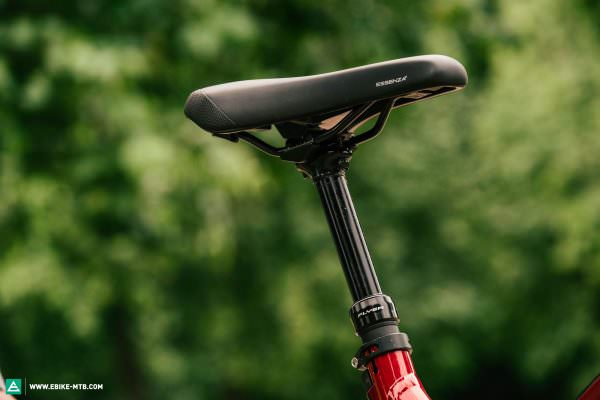
Trekking riders use dropper posts primarily for getting on and off the bike. However, the Flyer’s long seat tube prevents you from using the dropper post effectively.

The cable routing around the cockpit of the Flyer could be neater. The cables are equally as exposed where they transition to the bike’s rear end.
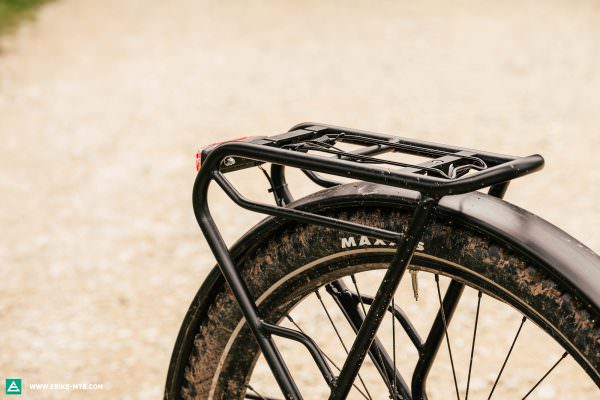
With its extensive range of accessories, including a luggage rack, lights and mudguards, you’ll be well-equipped to tackle any scenario. The only disappointment here is the rickety Pletscher Comp Flex bike stand. It tends to open up on bigger bumps.
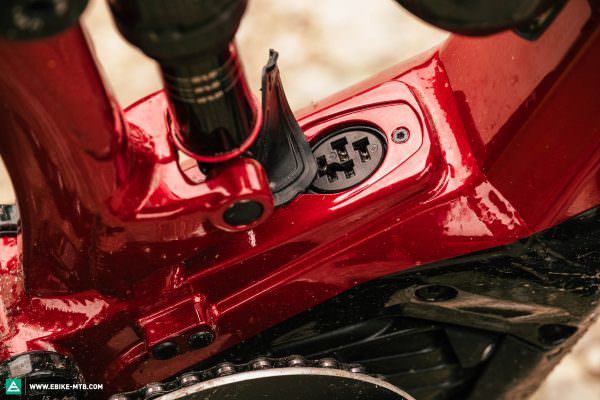
As usual, we’re talking about the fiddly rubber flap that covers the charging port. Unfortunately, Flyer didn’t follow the example set by many other brands by developing their own cover.
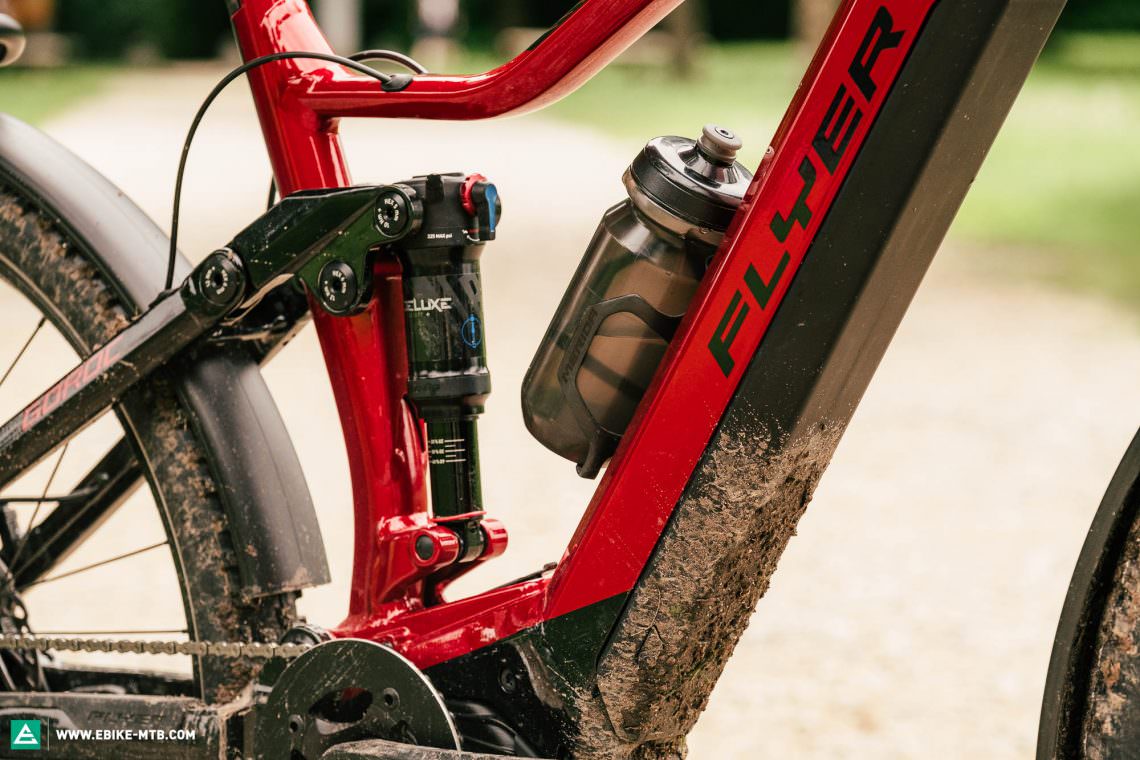
With rear suspension and a RockShox Deluxe Select+ shock, mountain bike technology is trickling down into the trekking world.

The MAXXIS Forekaster tires have found their way from mountain bikes to the trekking sector, providing a lot of traction on hard and loose surfaces.
FLYER Goroc3 6.50
€ 5,699
Specifications
Motor Bosch Performance Line CX 85 Nm
Battery Bosch PowerTube 625 Wh
Display Bosch Intuvia
Fork SR Suntour AION35 EVO 140 mm
Rear Shock RockShox Deluxe Select+RT 130 mm
Seatpost FLYER Dropper Post MT171 150 mm
Brakes Shimano MT520 200/180 mm
Drivetrain SRAM NX Eagle 1x12
Stem FLYER Alloy 50 mm
Handlebar FLYER Alloy 740 mm
Wheelset RODI Ready 30 27.5"
Tires MAXXIS Forekaster Silk Shield 2.35"
Technical Data
Size S M L XL
Weight 27.04 kg
Perm. total weight 150 kg
Max. payload (rider/equipment) 122 kg
Trailer approval yes
Kickstand mount yes
Specific Features
Supernova M99 MINI PURE 25/Busch & Müller 2C
dual-battery option
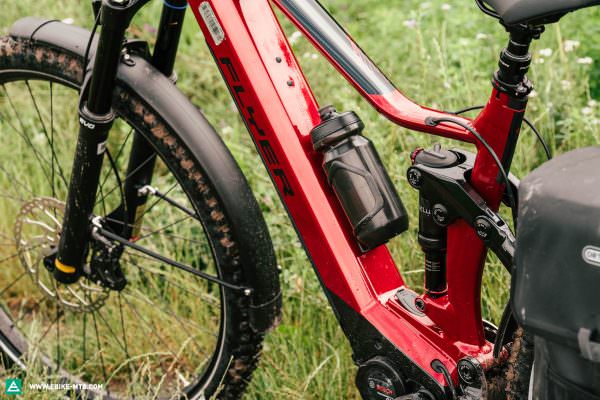
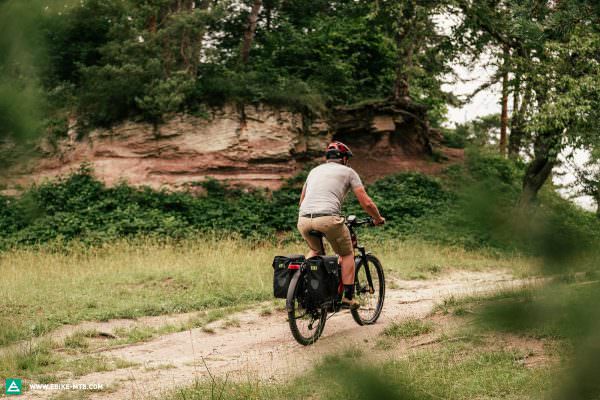
The Flyer is a capable climber. Even with weight on the rack, the front wheel sticks to the ground and remains easy to control.
Don’t make me nervous! – Stability aboard the Flyer Goroc3 6.50
Through fast and tight corners, trying to dodge manhole covers or puddles, the Flyer’s handling feels nervous and wobbly. The tires don’t transition well when initiating a turn and the front wheel has a tendency to run ahead of the bike in corners, which can throw the rider off balance. On bumpy gravel roads, the handling means that you have to pay close attention and look far ahead to avoid having to make sudden manoeuvres. The bike is outside of its comfort zone on winding trails, where it isn’t as much fun to ride as the sporty Trek Powerfly or Merida eOne-Forty. On steep descents, the Flyer pushes the rider forward over the bars and robs you of confidence and the small 180 mm rotor at the rear isn’t reliable enough for long descents either, especially not for heavy riders or when you’re hauling luggage. With luggage on the rear, the nervous handling is amplified during quick changes of direction, regardless of the terrain. However, for those who have a relaxed riding style and can avoid abrupt direction changes, the Flyer is a reliable trekking bike that is more capable on the climbs than most of its competitors thanks to the front-heavy weight distribution. In these instances, it can make good use of the power offered by the excellent Bosch Performance Line CX motor. The dynamic eMTB mode helps regulate its power depending on the situation, allowing you to ride along at a relaxed pace in one moment only to unleash the motor’s full power as you hit a steep climb in the next. No need to switch between modes.

Mountain bike technology on an E-trekking bike – Comfort on the Flyer Goroc3 6.50
The Goroc3 6.50 relies on mountain bike technology for a pleasant trekking experience. While offering increased freedom of movement on off-road terrain, the 150 mm dropper post makes getting on and off that much easier. However, due to the overly long seat tube of the frame, the seat post is too long for riders with short legs. For added comfort, the full-suspension Flyer Goroc3 6.50 relies on a 140 mm travel SR Suntour Aion35 Evo fork and a RockShox Deluxe Select+ shock controlling the 130 mm travel at the rear. Despite ample travel, the suspension responds reluctantly to vibrations and small bumps, only absorbing bigger impacts from things like curbs. As such, it isn’t able to deliver the same level of comfort as the Riese & Müller Homage. Unfortunately, the stand is much more responsive on uneven terrain and always rattles. It even opens up on bigger bumps, making it a safety hazard that you should replace as soon as possible.
With a relaxed riding style at a moderate speed, the Flyer proves to be a capable trekking bike for hauling your luggage, performing best on the climbs.”
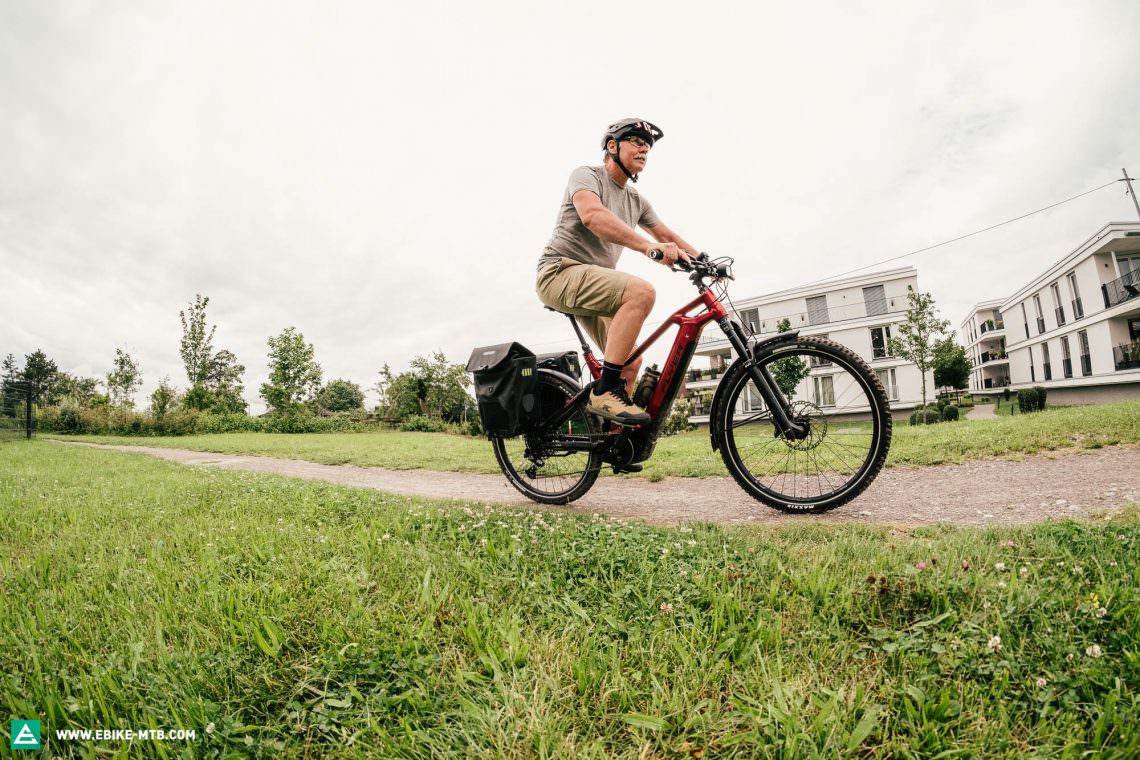
The number you have dialled has not been recognised – The lack of connectivity on the Flyer Goroc3 6.50
Other equipment, consisting of solid aluminium mudguards, a luggage rack, chain guard and light system, are much quieter than the stand and add real value. The increased visibility provided by the Supernova M99 Mini Pure 25 headlight is a big plus in safety and can only be topped by the additional high beam function of the M99 Mini PRO on the Riese & Müller. Sadly, the integrated Busch & Müller 2C taillight looks like a rudimentary plastic reflector in comparison. With a carrying capacity of 25 kg, the rack is neatly integrated into the dropouts. The analogue conveniences aside, the Flyer doesn’t cater to fans of connectivity. The eight-year-old Bosch Intuvia display can only do the basics. You’ll have no choice but to upgrade should you want to navigate on the go or use any fitness functions. The € 299 COBI.Bike system is compatible with the Intuvia bracket, doesn’t require any tools to fit and connects to your smartphone. For those who want to leave their smartphones at home, the Bosch Nyon display can be retrofitted by your local dealer, costing € 349 plus labour. The Nyon display gives you the same range-based navigation as that of the Riese & Müller Homage.



Tuning tips: upgrade to COBI.Bike or Nyon display and replace the bike stand
The Flyer Goroc3 6.50 in detail
The Flyer Goroc3 6.50 looks massive with its striking brace between the top and down tube, which Flyer fans love. However, the looks and workmanship of the Flyer aren’t all good. The cable routing is messy and the cables aren’t bundled together properly in the cockpit, entering the frame in several places and emerging again between the top tube and seat stays where they make wide, unsightly arcs. The seat tube has an aerodynamic shape like you’ll see on road bikes, though this feature doesn’t have any use on a trekking bike. The Bosch Performance Line CX motor and the 625 Wh battery at the heart of the bike have been neatly integrated into the frame. There’s a solid skid plate protecting the motor but the fiddly rubber flap for the charging port is one of the worst in the test. You can choose to fit either a bottle cage or a second 500 Wh PowerPack battery on the down tube. Costing an additional € 950, the extra battery gives you a total capacity of 1,125 Wh and enough range for particularly long assisted tours.
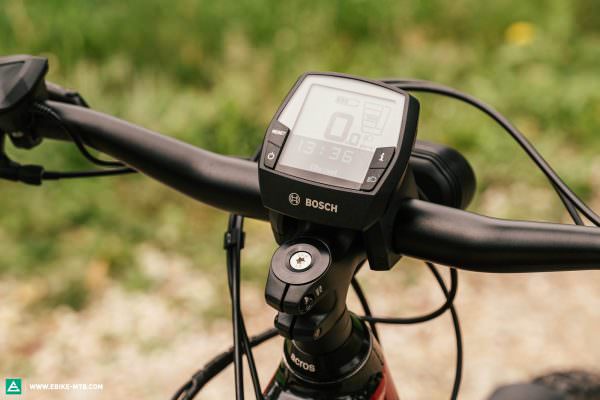
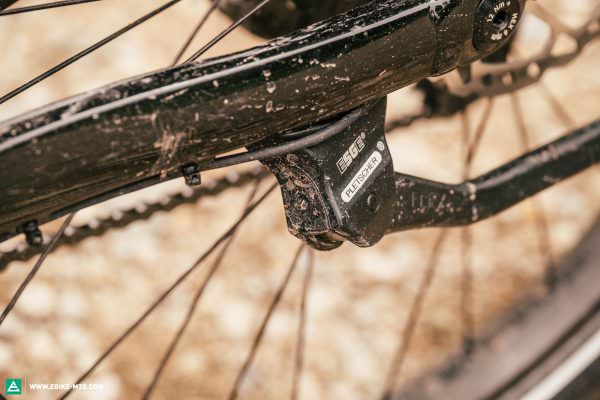
Flyer Goroc3 6.50 conclusion
The Flyer Goroc3 6.50 is made for the alpine crossers amongst trekking fans. If you like to go on tours with lots of climbs and don’t mind the chaotic cable routing, the Flyer could be the right choice. The nervous handling makes it unsuitable for detours off the beaten track and the lack of connectivity stands in stark contrast to the remainder of the test field. As such, the Flyer can’t keep up with the better bikes in the group test.
Tops
- strong climbing performance
- modular battery concept
Flops
- demanding handling through tight corners
- rickety stand
- outdated Intuvia display without any connectivity
- seat post too long for short legs
For more information head to the manufacturer website
The review of the Flyer Goroc3 6.50 is part of our big trekking eBike group test “The best trekking eBike of 2021 – 8 modern eBikes for touring in comparison”. We’ve tested four different concepts and eight bikes to tell you what modern trekking eBikes are capable of and which one is the best to buy.
Test bike overview
CENTURION Country R2600i | FLYER Goroc3 6.50 | Greyp T5.2 | Kalkhoff Entice 5.B Advanced + | MERIDA eONE-FORTY EQ | Niner RLT e9 RDO | Riese & Müller Homage GT Touring | Trek Powerfly FS 9 Equipped
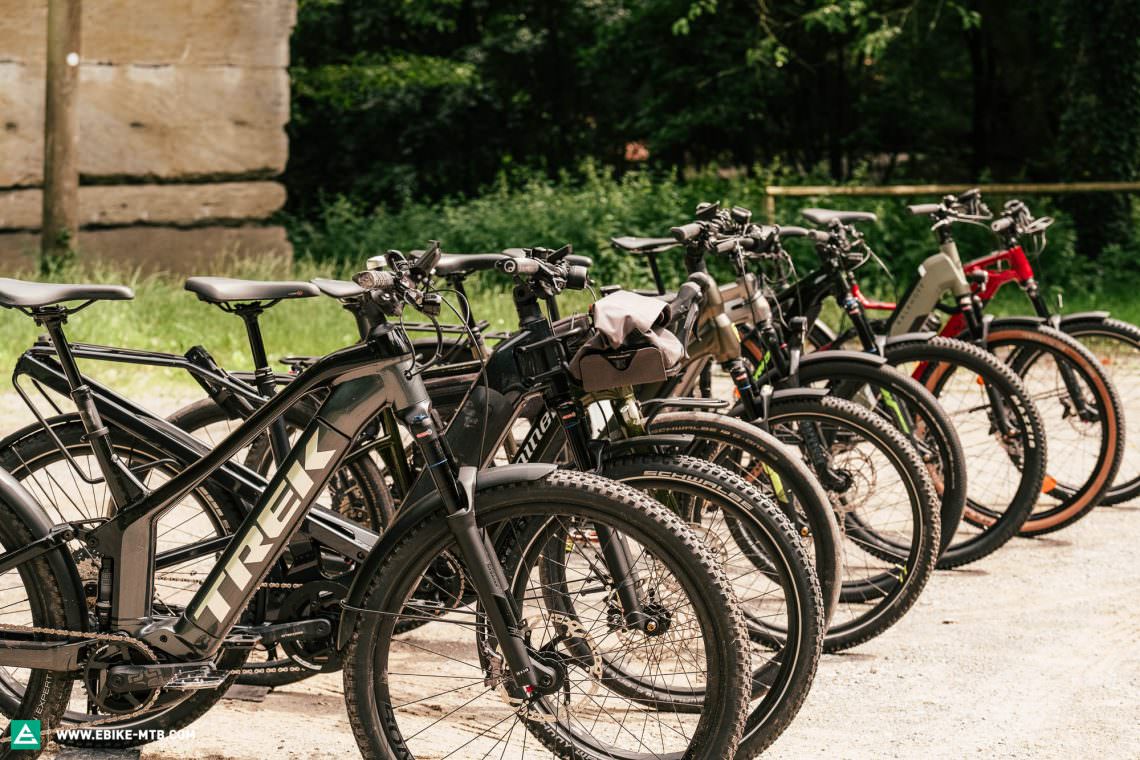
Did you enjoy this article? If so, we would be stoked if you decide to support us with a monthly contribution. By becoming a supporter of E-MOUNTAINBIKE, you will help secure a sustainable future for high-quality cycling journalism. Click here to learn more.
Words: Rudolf Fischer Photos: Jonas Muessig









